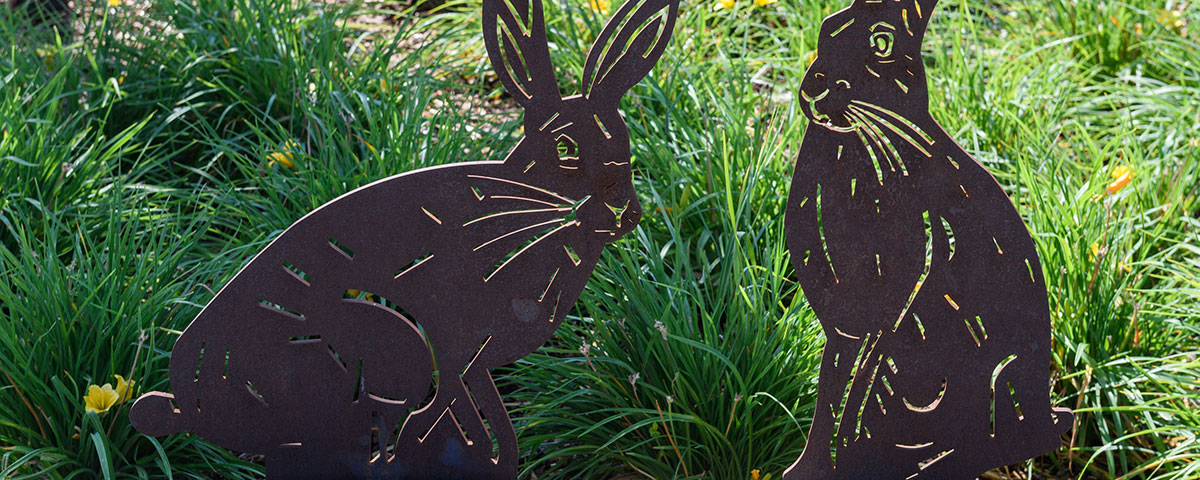Indigenous public art
Opportunities for Indigenous artists
New opportunities are available for Indigenous artists!
- Apply now: Visit the opportunities for artist page.
- Stay updated: Sign up for our monthly public art newsletter and the Indigenous artist roster.
- Follow us: Discover the latest opportunities and celebrate Indigenous artists of Facebook and Instagram.
-
Imagine the future through Indigenous eyes. Share your boldest digital creations in our 2026 Indigenous Digital Artist Call with the theme "Indigenous Futurisms". Read more and help shape tomorrow’s vision.
Indigenous arts professionals
We are deeply honored to be the first municipality in Canada with an all-Indigenous team of arts professionals dedicated to delivering more opportunities for Indigenous artists and increasing Indigenous representation in the public art collection.
Indigenous curators help build connections between local government, the arts community and Indigenous groups.
-
Sign up for our monthly public art newsletter to be notified when all public art opportunities become available.
-
View other opportunities for artists on the Calgary Arts Development website.
Evelyn Mikayla Martin (Itsooaakii)
Blackfeet Tribe of Montana, Squamish, Comanche, Filipina
Evelyn Mikayla Martin (Itsooaakii) is a visual artist, curator, and art educator whose work reclaims space and identity as a Blackfeet woman. Known for her vibrant self‑portraits, billboards, and projects of reclamation, Martin highlights the complexities of engaging with ancestral cultural practices through a contemporary lens—celebrating the resilience, beauty, and voices of Blackfoot women, girls, and Aa’woowaakii (Two-Spirit individuals).
Her artwork has been featured internationally, including exhibitions at the Seattle Art Museum, Arts Commons (Calgary), and La Macina di San Cresci (Italy). In 2025, Martin curated Ii’pait’aapiiyisinn: Art in the Contemporary and Ancient Blackfoot Way of Life at Stride Gallery—the first all‑Blackfoot art exhibition in Calgary’s history.
Through exhibitions, workshops, and public art projects, Martin continues to champion Indigenous presence, visibility, and healing in both local and global contexts.
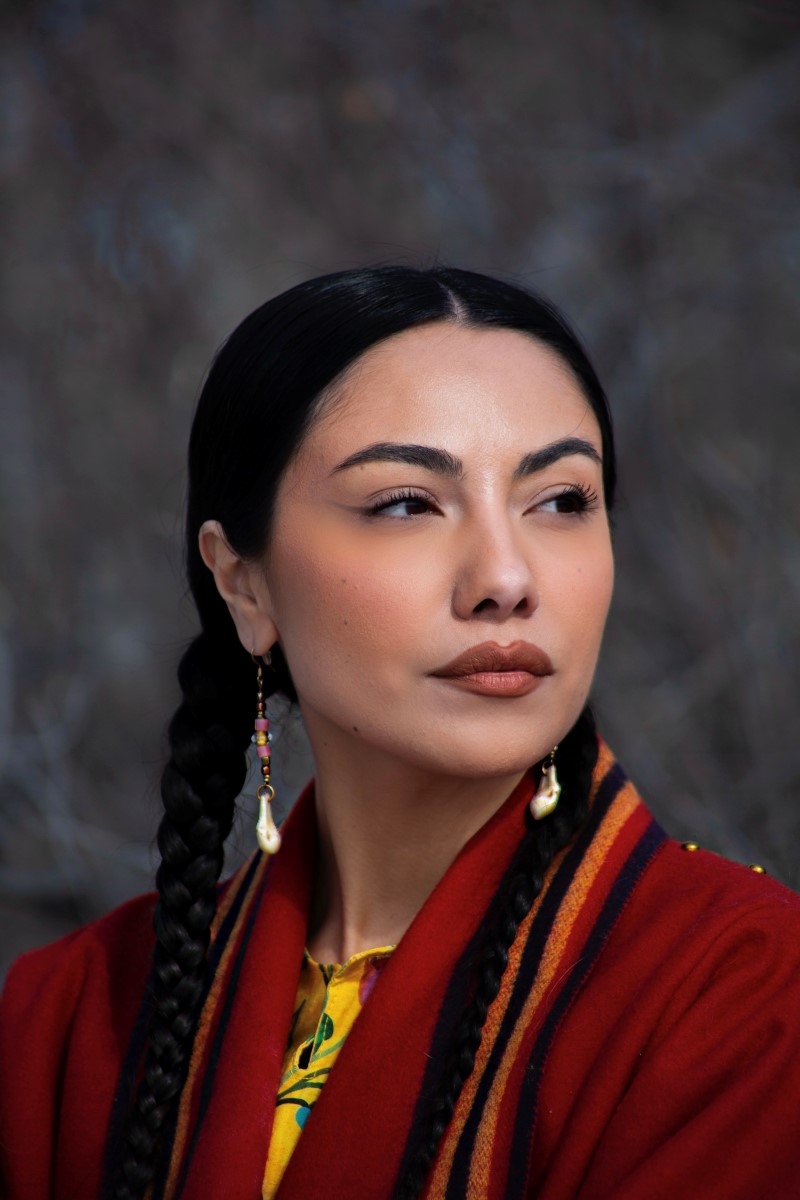
Hali Heavy Shield (Nato'yi'kina'soyi – Holy Light that Shines Bright)
Blood Tribe (Kainai) of Southern Alberta, Blackfoot Confederacy
Nato'yi'kina'soyi (Holy Light that Shines Bright)/Dr. Hali Heavy Shield is a multidisciplinary artist, educator, author, and curator.
Her work often references the stories, landscapes, and lived experiences of her home community, drawing inspiration from Blackfoot narratives, significant cultural sites, family, and the enduring strength of women. Using vibrant colours, textual elements, and symbolism, Hali weaves together Indigenous traditional and contemporary perspectives with imagined futurisms, creating work that is both culturally grounded and forward-looking.
Committed to meaningful dialogue and transformative action, she engages communities in generative discussions that support reconciliation, creativity, and collective healing.
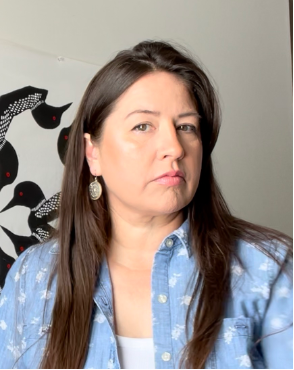
Jessica McMann
In summer 2020, we welcomed Jessica McMann to the public art team as an Indigenous curator.
Jessica is an Alberta-based Cree (Cowessess, SK) curator and artist (musician, dancer, visual artist). She's also a classically trained flutist with a Bachelor of Music from the University of Calgary and a Master of Fine Arts from Simon Fraser University.
In addition to creating traditional beadwork and drums, she also makes immersive sound art videos. Her recent compositions and soundscapes explore Indigenous identity and history. She's co-founder and co-director of Wild Mint Arts, an Indigenous arts company.
Although her art is primarily music and dance, Jessica's artwork is exhibited at Urban Shaman Gallery and Pitt Rivers Museum in Oxford. Her curatorial practice is embedded in Indigeneity, relationality and advocacy.
She works closely with the Moh'kinsstis Public Art Guiding Circle, public art program staff, and the Indigenous Relations Office to bring Indigenous knowledge, histories, cultures, languages, traditions, worldviews, and ways of knowing into the public art program.
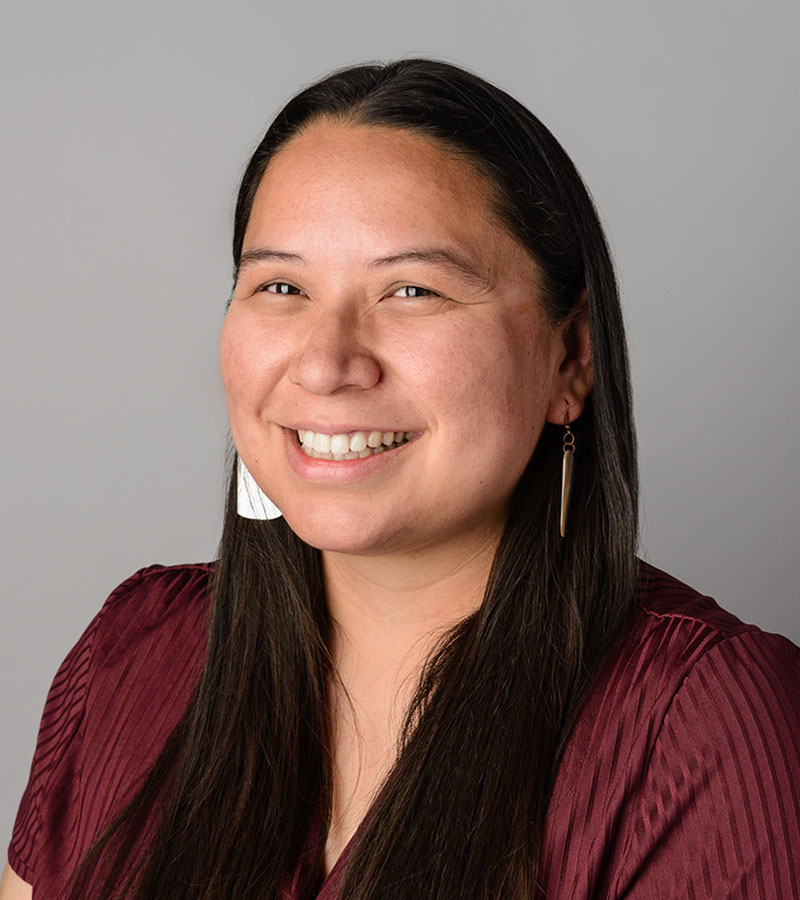
Leo Chiniquay
Stoney Nakoda Nation
My name is Leo Chiniquay and I am a two-spirit artist. My pronouns are He/They and I currently reside in Calgary, Alberta. I am currently a student at Alberta University of the Arts majoring in Illustration and Character design. My hobbies include drawing and creating characters with complex stories, playing Dungeons and Dragons, Axolotls, and anything nerdy!
My goal is to highlight contemporary artists from the Stoney Nakoda Nation to share our culture and ways of life. I want to create opportunities for artists living on the Mini Thni, Bighorn, and Eden Valley reserve as a way of healing from generational trauma. It is important for us to share our story so we can bring awareness but also to show that our trauma does not have to define us.

Liz Barron
Liz Barron is a proud Métis cultural worker whose family names include Barron, Chalfoux, Peltier, and Miller. With decades of experience in arts management, curation, and advocacy for Indigenous and Métis artists across Canada, she has established herself as a leader committed to strengthening Indigenous arts ecosystems, mentorship, and community-centred cultural practice.
A seasoned curator, Liz recently curated an augmented reality exhibition on Indigenous moon stories, which opened at the Vienna Muse and brought together artists exploring cosmology, ancestral knowledge, and digital innovation. Her curatorial work extends across media arts, film, and visual art, often centring Indigenous futurisms, mentorship, and the transmission of knowledge between generations.
Liz is a founding member of the Harbour Collective, which leads a series of LABS focused on developing artists’ skills in media arts, filmmaking, visual art, and emerging technologies including artificial intelligence. She also serves as Co-Chair of the Board for Mentoring Artists for Women’s Art (MAWA) and Chair of SCALE (Sustainability in the Arts Leadership), a national coalition advancing climate action and environmental responsibility across the arts sector.
Her writing was recently published in Herizons, Canada’s foremost feminist magazine since 1992, and she continues to work across editorial, research, and policy spaces to support Indigenous artists and organizations. She is also currently enrolled in Whiskey University, studying the cultural histories and craft of spirits as reflections of land, tradition, and story.
A devoted Prince fan and unapologetic Fluevog collector (with a self-imposed two-pair-a-year cap), Liz brings creativity, humour, and heart to every project. Her leadership is grounded in care, reciprocity, and joy — qualities that continue to shape her work with artists, communities, and institutions across the country.
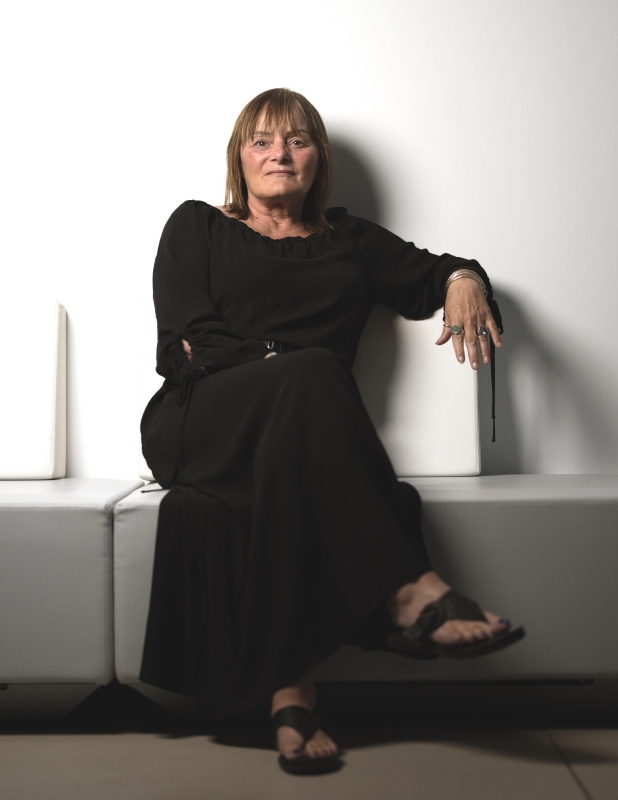
Matthew Provost (Naatsikapamatoosin – Two Smudge)
Piikani Nation & Kainai Nation, Blackfoot Confederacy
Matthew Provost is a designer and multidisciplinary visual artist whose work spans menswear, regalia, printmaking, and ledger art. Rooted in Siksikaitsitapi traditions, his designs often draw inspiration from Niitoyis (Lodges), weaving stories of home, culture, and resilience.
Since 2016, Matthew has shared his work through exhibitions and runways, including Vancouver Indigenous Fashion Week and a collective showcase with 4KINSHIP in Santa Fe. Currently serving as one of four Blackfoot Curators with the City of Calgary, he is committed to uplifting Piikani culture and artists, using design as a way to celebrate stories, strength, and creativity that have existed since time immemorial.
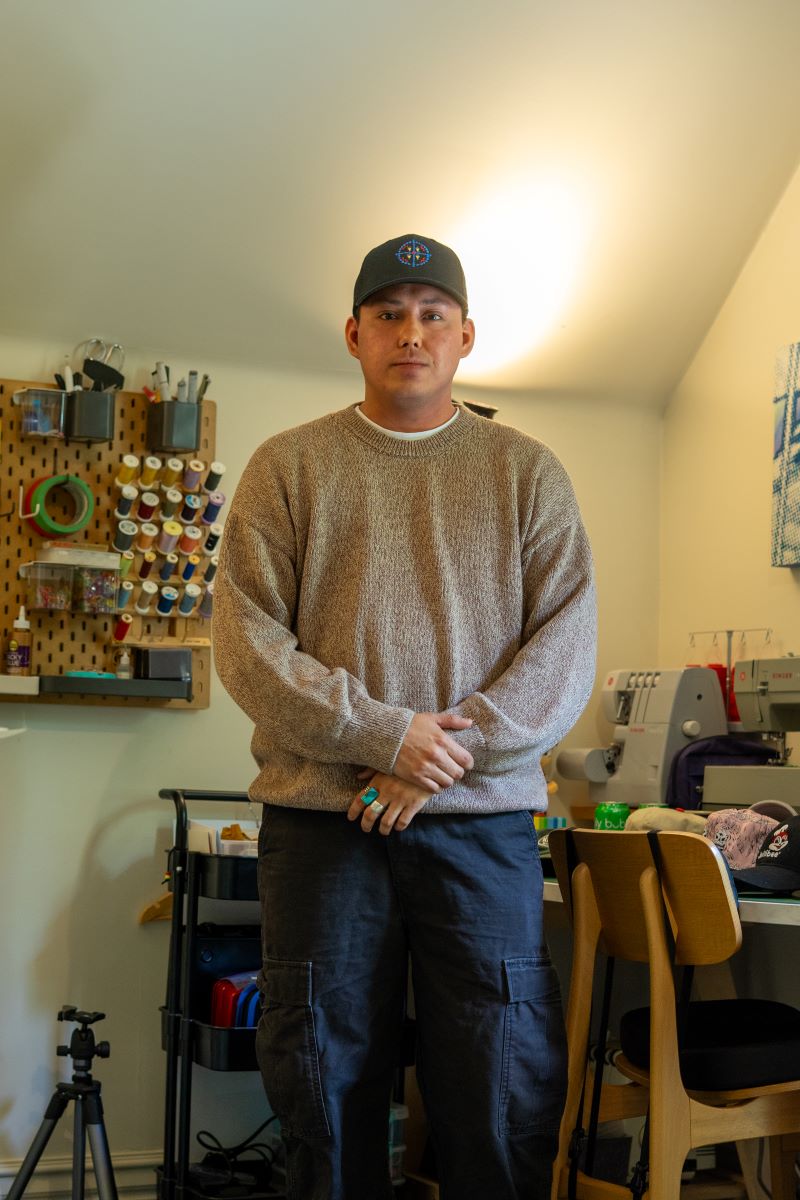
Riel Manywounds
Tsuut’ina Nation (Treaty 7) and Nak’azdli Whut’en, in Dakelh Territory.
I’m from the Manywounds family in Tsuut’ina and am grateful to have grown up in Nak'azdli on my father’s reserve. My grandmother on my mother’s side was originally from Siksika, so I'm part Blackfoot.
Now a solo caregiver and mother to two beautiful children, Shine and Pamela, I have been back in Tsuut’ina for 12 years and working in my community for almost nine years.
Currently, in my role as Youth Program Coordinator, I remain active in my community where I attend and facilitate ceremonies, coordinate youth powwows and rodeos, and create meaningful and impactful youth art programming. Six years ago, I also began working within the city in arts administration.
With these experiences, I am both honored and excited to join the Indigenous Art Curator Mentorship program with the hope of strengthening relationships, building new connections, and developing new traditions for inclusive public art. Only together can we learn how to better live in reconciliation.
Siyisgaas.
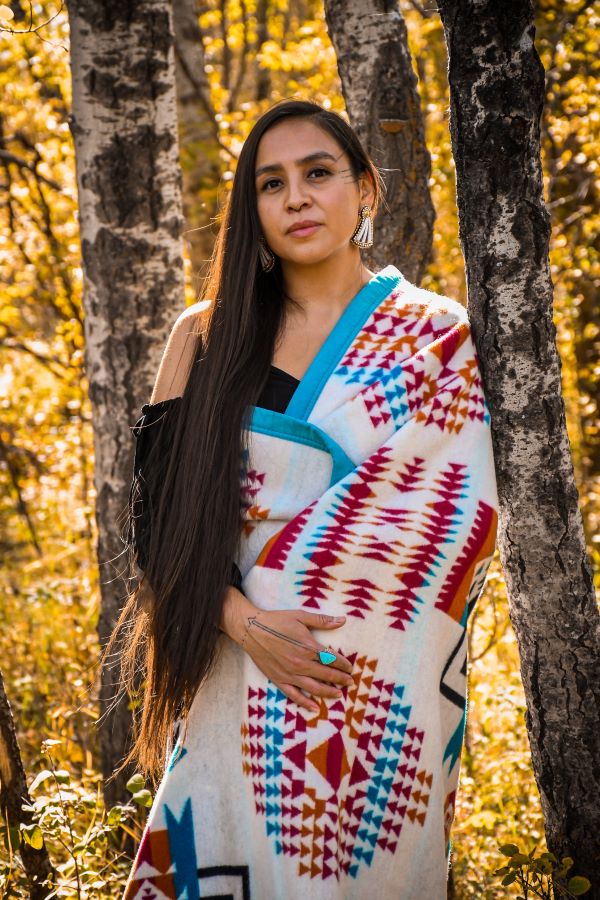
Sikapinakii Low Horn
Blackfoot Curator – Siksika Nation
Sikapinakii “Black Eyed Woman” Low Horn is the Blackfoot Curator for Siksika Nation, dedicated to creating artistic opportunities for their community. A graduate of the Alberta University of the Arts with a Bachelor of Fine Arts in Drawing, Low Horn’s research is rooted in the power of Blackfoot storytelling.
An artist for as long as they can remember, Low Horn works across a variety of mediums to share the stories of their people, celebrating the richness of Blackfoot history and culture while fostering education and dialogue. Living close to family on Siksika Nation, Low Horn is passionate about elevating the voices and artistic practices of their community.
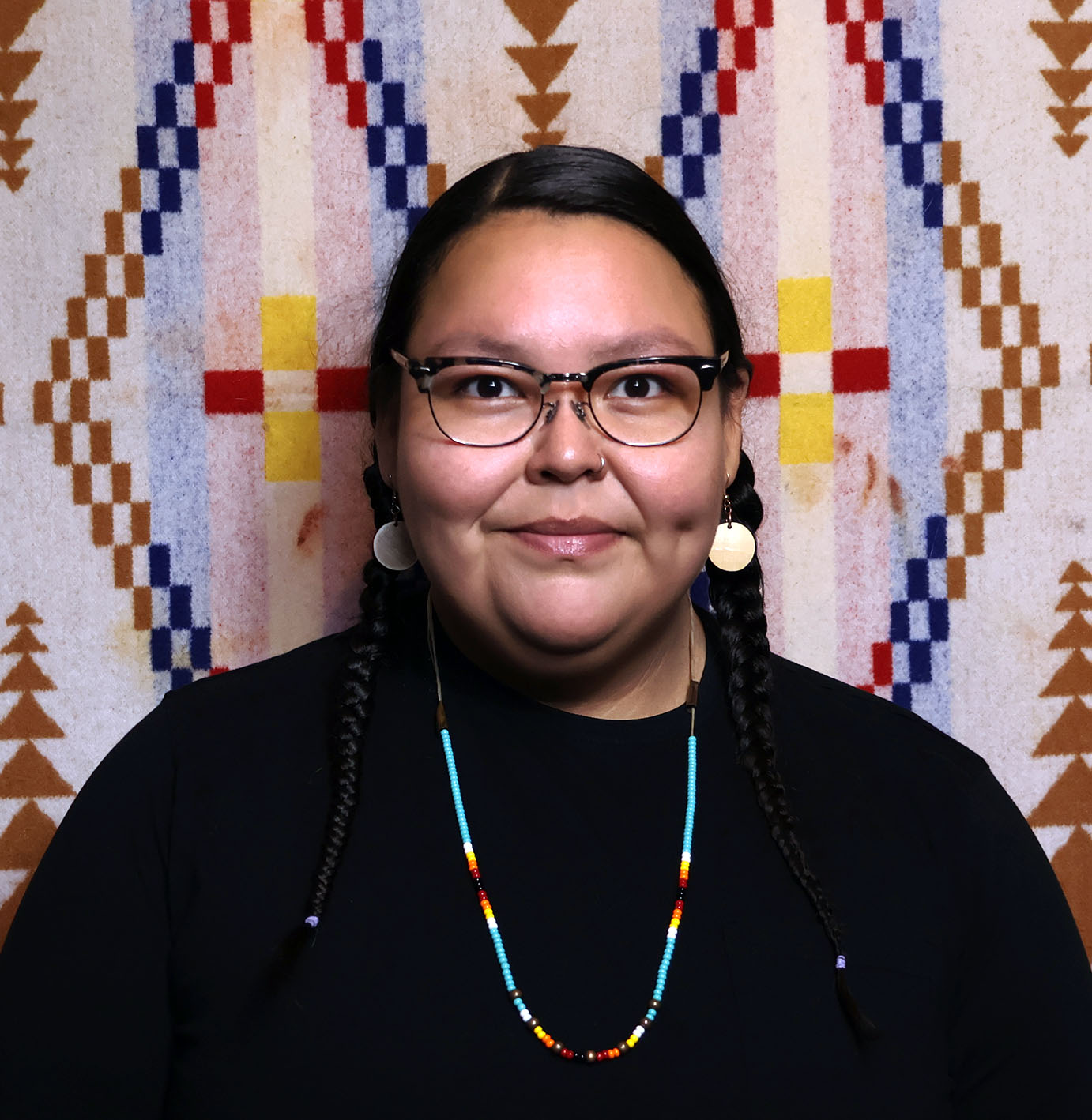
Sophia Lebessis
In consultation with the Nunavut-based elder community, Inuit art gallery owner Sophia Lebessis is working to curate a travelling collection of sculptures, prints and textiles that both respects and reflects the rich art and culture of the Inuit people of Canada.
Sophia is Inuit on her mother's side and Greek on her father's. She grew up in Arviat, Nunavut, learning about the world of Inuit art and how to promote the works of highly collectible and influential artists.
With her keen eye for art and experience in sourcing art, from creation to distribution, Sophia has a unique approach to contributing to the future of Inuit art that focuses on education and entrepreneurship to transform appreciation for Canada's national art form.
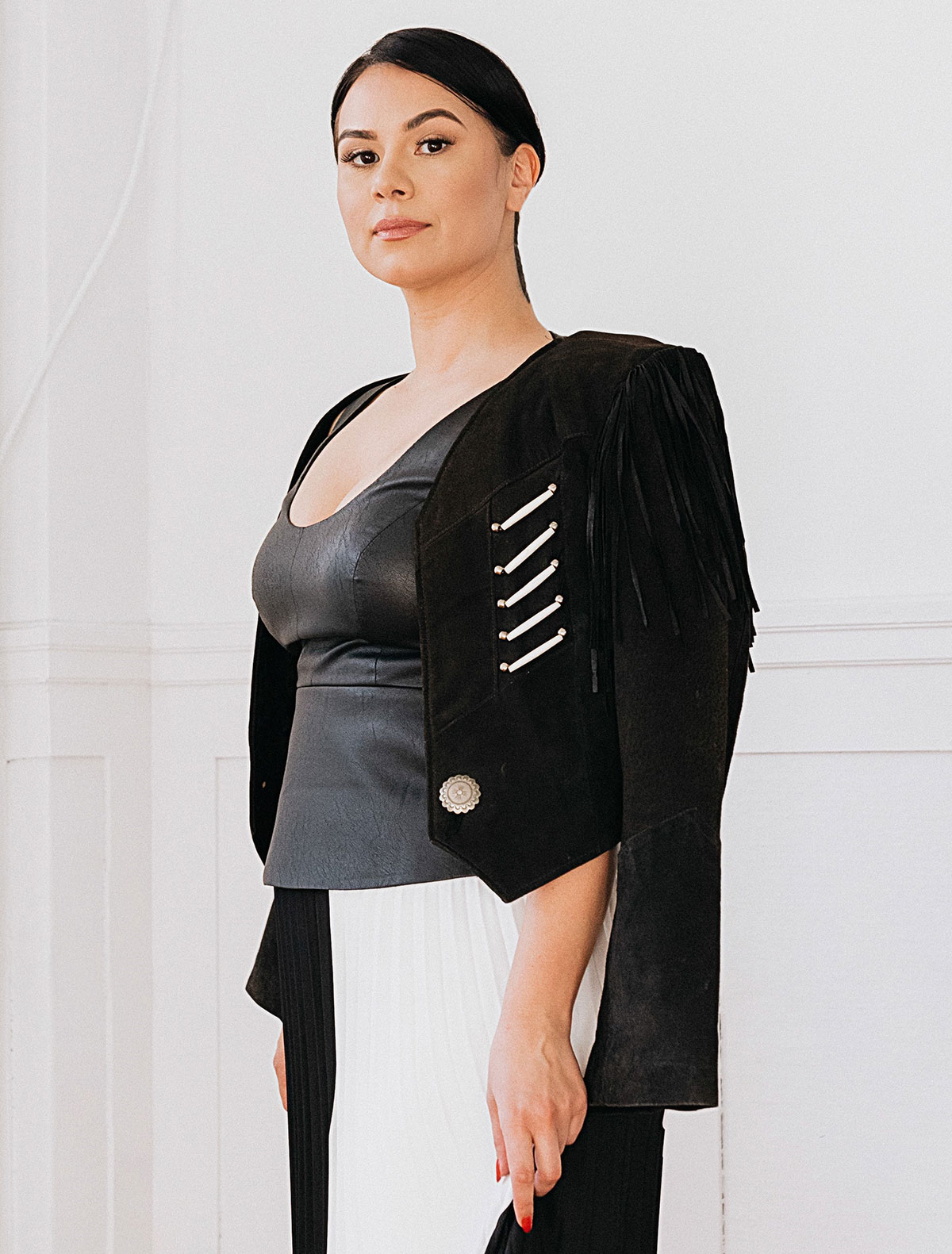
Indigenous team members strive to ensure Treaty 7 Nations, Métis Nation of Alberta, District 5 and 6 and all Indigenous Canadians are accurately and fairly represented in the City’s public art collection.
Neko Wong-Houle
Neko Wong-Houle (she/they) is a queer, registered band member of the Blackfoot, Kainai Nation, with Ojibwe and Chinese-Canadian ancestry.
She is currently based in Montréal, Quebec, where she is studying film animation in her third year at Concordia University. She is working toward a multimedia practice with primary interests in animation, storytelling, fine arts practices and digital media with a passion for communications.
In 2021, Neko received the Indigenous Golden Sheaf Award at the Yorkton Film Festival and was the youngest filmmaker to win any award at the festival. For three consecutive years, Neko has received the Susan Pigott Fellowship for Indigenous filmmakers, and in 2024, they are representing the Indigenous Futures Research Centre as a Milieux Institute Undergraduate Fellow.
Neko is excited to reconnect with their traditional territory of Southern Alberta by promoting local Indigenous artists through their work with the Calgary Indigenous Public Art Team.
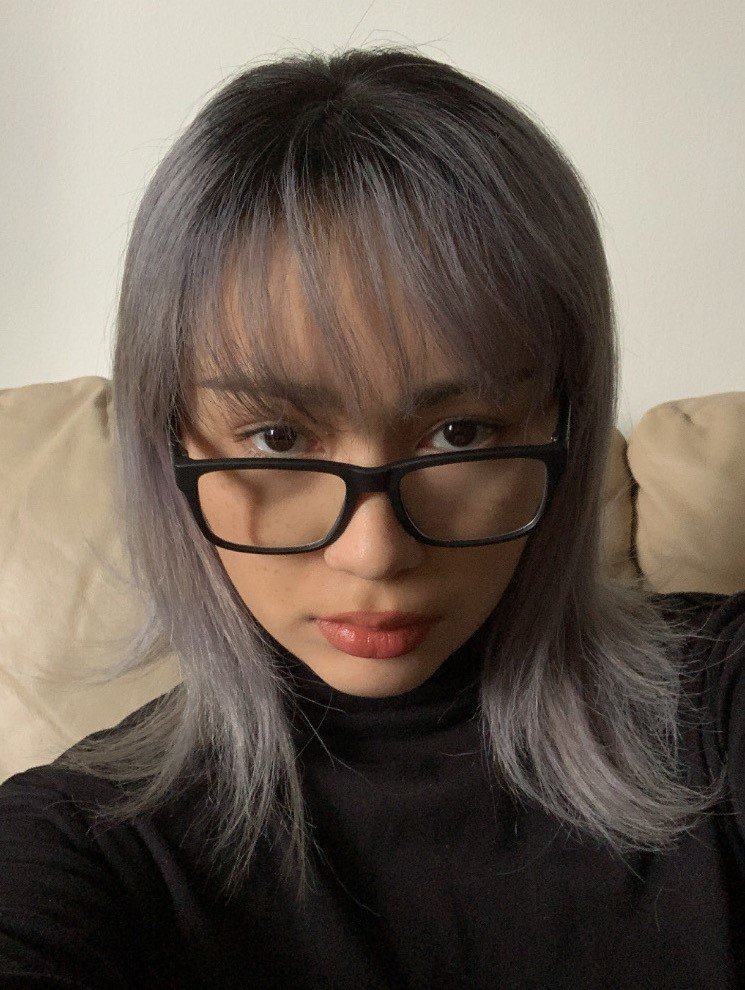
Kayla Gale
Kayla Gale is a Cree-Métis artist born in Mohkínstsis | Wîchîspa | Guts’ists’i | Calgary to a Dene-Métis family. They received their BFA at Alberta University of the Arts and are currently pursuing their Master of Education at the University of Calgary. Kayla is committed to their community and proud to be involved with many grassroots Indigenous initiatives within the arts. Having received numerous awards for their leadership efforts, Kayla continues to support Indigenous artists within Calgary and is looking forward to further connecting with artists around public art.
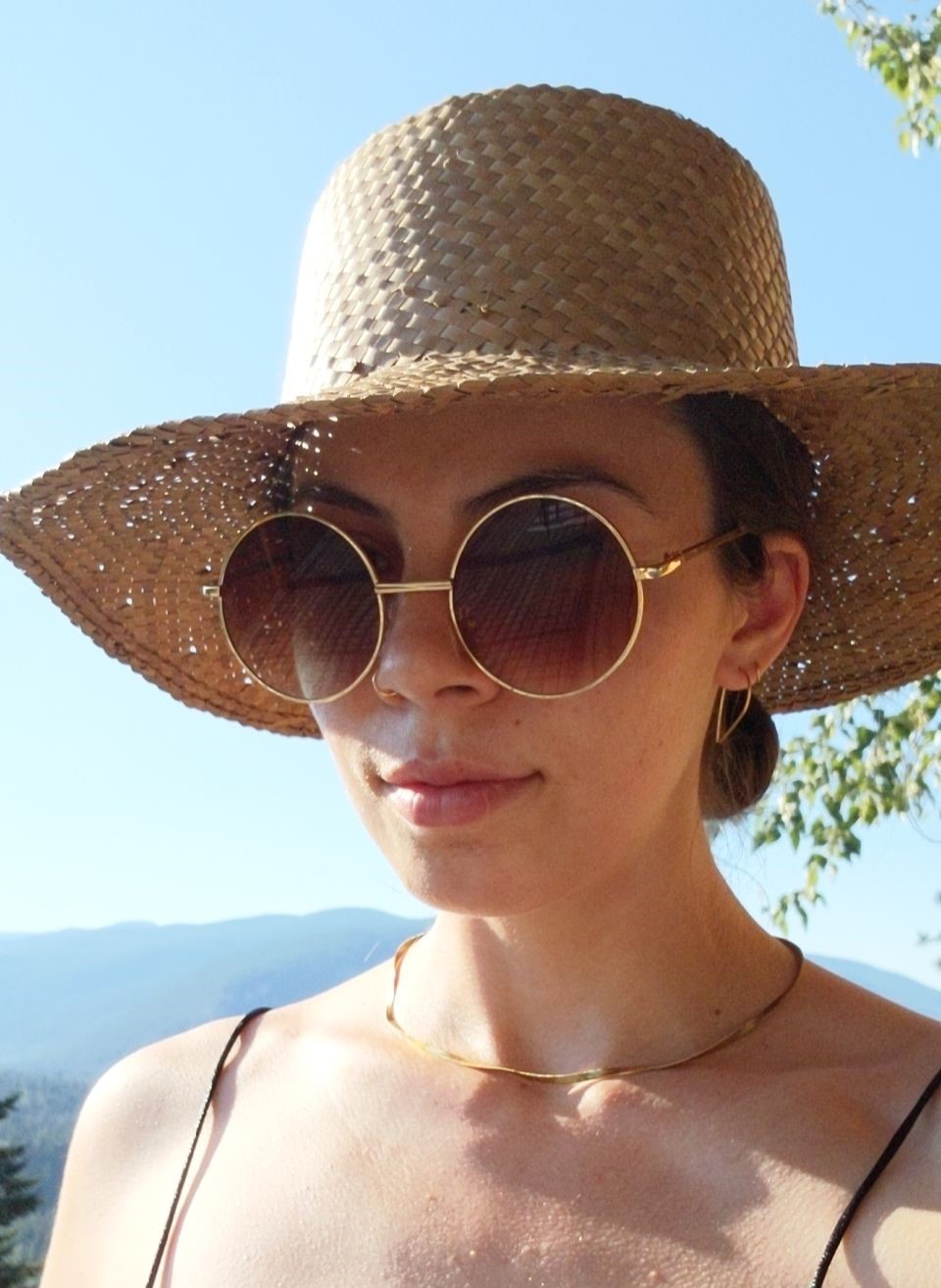
Art created by Indigenous artists
Moving toward Reconciliation as a city, province and country requires showcasing art by Indigenous artists as a way of understanding and learning about the people who have lived in this region since time immemorial.
Click on each photo to learn more about the artist and artwork.
Title: The Creators Titans
Artist: Tania Big Plume
Exhibition year: 2025
Title: Constellations
Artist: Alicia Eagle Plume
Exhibition year: 2025
Alicia King is a versatile Indigenous artist from the Blood Tribe (Kainai Nation). Her passion for color, line, and abstraction intertwines in her work, allowing her to express herself in a deeply personal manner. Alicia aims to tell stories and share meaningful messages through her art, with each piece carrying unique significance based on her intent.
A recurring theme in Alicia's work is emotion — whether it conveys love, pain, or appreciation for often-overlooked aspects of life, such as nature, land, and animals. She aspires to slow down the fast-paced world around us, encouraging viewers to notice the beauty in quiet, subtle moments.
Alicia also emphasizes the importance of Truth and Reconciliation, integrating her culture into her art to bring visibility, awareness, and healing to Indigenous stories and experiences that have long been ignored.
Her goal is to connect with people through her art, regardless of their background, as she believes art is for everyone, of all ages. Currently, Alicia is a student at the Alberta University of the Arts, pursuing a career in graphic design and illustration. Art remains her passion and her voice, and she hopes each piece she creates contributes to change, connection, and community healing.
Title: Indigenough
Artist: Autumn Whiteway
Exhibition year: 2025
In this piece, Autumn Whiteway pays homage to her Afro-Indigenous heritage, showcasing the intersection of her Cree and Ethiopian identities. The artwork features a hand drum and jebena (coffee pot), symbolizing the beautiful meeting of these two cultures.
Model: Ali Tapaquon
Location: Lougheed House
Title: Healing
Artist: Ashley Crowchief
Exhibition year: 2025
Ashley is a Blackfoot woman whose life has been profoundly shaped by art, providing her with the opportunity to connect with remarkable artists. After years of working on various projects in film and events, she decided to embark on her own creative journey. Starting with the raffle of paintings she created in high school, Ashley has spent the last four years exploring different designs and crafting mediums.
Her aspiration is to grow her business to create more personal projects at home while also supporting others in achieving their artistic goals. For Ashley, art is a safe and comforting space for expressing her identity and culture.
Her piece, "Healing," reflects Indigenous culture, representing the different elements that contribute to a whole being—each aspect significant to her journey. Ashley envisions Aboriginal artists displaying their work across Calgary, providing a voice and platform for those hesitant to express themselves, while inspiring the next generation.
Title: Mohkinsstsis
Artist: Joey Big Snake
Exhibition year: 2025
Joey Big Snake made this work to represent the two homes that Calgary is for themselves. The one that Joey made it when they moved up from Siksika, and the one that already exists here when they look at the skyline. This is a view from their mind of the area around Kensington looking towards downtown, where they spent most of their time living in the area and is one of the areas of Calgary that feel important to them.
Initiatives
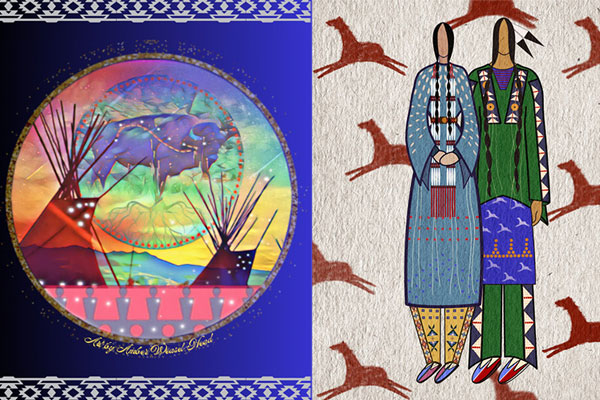
They Come Together & The People and the Lodge
They Come Together & The People and the Lodge celebrates the voices and visions of contemporary Indigenous artists from across First Nations. These two exhibitions explore cultural memory, traditional knowledge, and connection to the land — expressed through digital and contemporary art. Admission is free, and everyone is welcome.
Join Joey Big Snake on Sunday, Nov. 23, from 2 to 4 p.m. at Crawlspace Gallery (1336 9 Ave. S.E.) for a special afternoon as they speak about their work featuring a guest speaker. Coffee, tea and bannock will be provided. Admission is free.
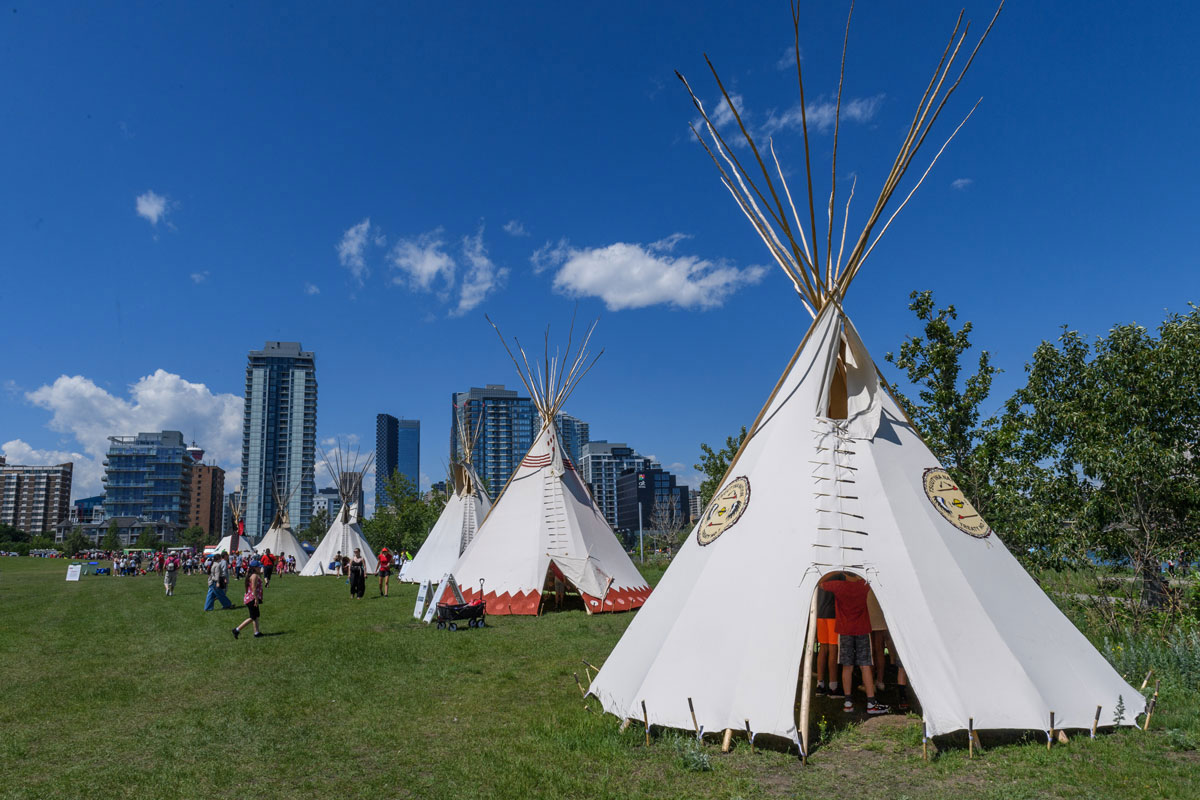
Indigenous Guiding Circle
Guided by the principles of Truth and Reconciliation, this initiative seeks to honour Indigenous knowledge, traditions and perspectives in the planning and delivery of Arts & Culture programs.
Read more about the Indigenous Guiding Circle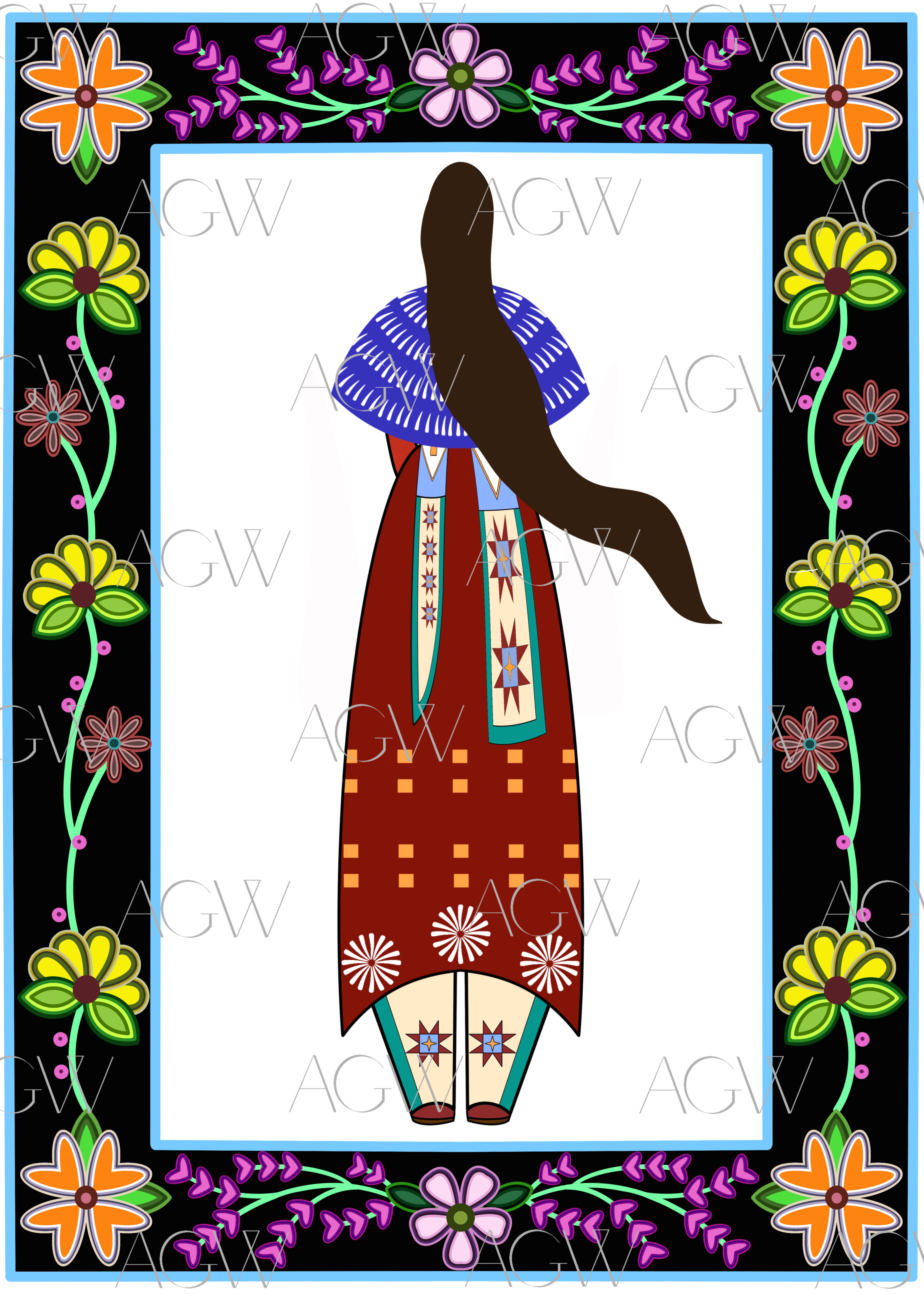
Indigenous Digital Art and Illustration Program
The Indigenous Public Art program invited Indigenous artists to submit existing digital artwork and illustrations to be licensed for use on The City’s website, temporary publications, and public-facing artist calls and posters. The program will result in Calgary significantly increasing its opportunities for Indigenous artists to consult on, participate in, and create public art in the city.
Artwork: Renewal by Alaynee Goodwill-Littlechild
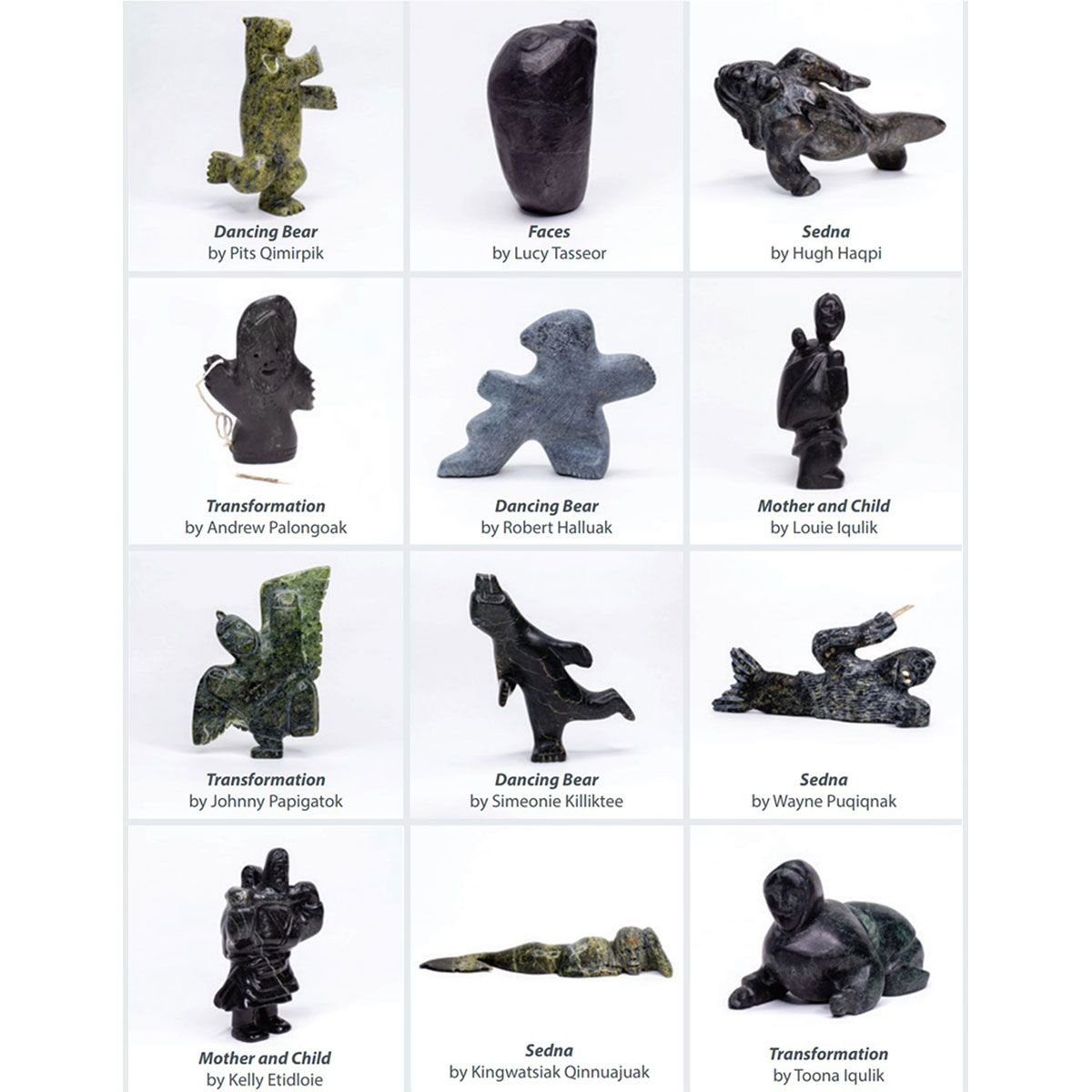
Tamaani | Here Inuit art exhibit
The Tamaani | Here art exhibit is a portable collection of 12 stone sculptures carved by artists from different regions of Nunavut. It is available for lending to teachers, schools and educational organizations in Calgary and area. Students will be inspired to further their learning about the rich art and culture of the Inuit of Canada.
The collection is curated by Sophia Lebessis, Canada’s first Inuk to own an Inuit art gallery. In the words of the curator, “Tamaani (Here) is a starting point with which to relook at Inuit art, not as a homogenous art form, but the land coming to life, bringing one into the imagination of an artist's relationship with the environment that has shaped them.”
Photography by Alana Bluebird-One Spot
Moh’kinsstis Public Art Guiding Circle
Since 2017, the Moh′kinsstis Public Art Guiding Circle has supported The City’s public art program to respond and act appropriately in its relationship with Indigenous communities and citizens. The Guiding Circle is made up of Indigenous artists of different disciplines, from a variety of communities and who bring diverse perspectives. Public art concepts, whether created by Indigenous or non-Indigenous artists, are presented to the Guiding Circle for feedback to ensure they are respectful of the original people of this land.
About reconciliation
Two reports were produced in 2015 to highlight calls to action for reconciliation. The City’s Indigenous public art program is responding to Call to Action #83, which is to create collaborative art that contributes to reconciliation.
- The Government of Canada produced the Truth and Reconciliation Commission Calls to Action, which outlines 94 calls to action for all levels of government.
- The White Goose Flying Report was created by the Calgary Aboriginal Urban Affairs Committee (CAUAC) shortly afterwards. It details the calls to action that can be achieved at a local level.
Learn more about the Calgary Aboriginal Urban Affairs Committee (CAUAC).
Past initiatives
Indigenous Place Keeping Program
The Indigenous Place Keeping program featured educational programming, workshops and art by Indigenous artists in the municipal building, a place where Calgarians come to do business and where Council meets to make decisions.
The program supported artists, performers, curators, and academics from all disciplines at any stage in their careers. It was open to all Treaty 7, Métis Nation of Alberta, District 5 and 6, urban Calgarian Indigenous and Indigenous people from elsewhere that currently make Calgary their home.
Digital Voices Exhibition
From October 2024 to the end of February 2025, there was a showcase of digital artwork by local Indigenous artists, presented by the City of Calgary Public Art Program and The Confluence Historic Site & Parkland. This exhibit highlighted the diversity of artists expressing their relationship to this place - Mohkinstsis - while maintaining their own cultural identity. We can see how the land grounds all with a sense of belonging and allows personal experiences and stories to flourish. The artworks were selected through a selection panel, with additional work chosen by the curator.
Featured artists included Crystal Clark, Andrew Holloway, AJ Kluck, Jadyn Fischer-McNab, Georgina Metzler, Stephanie One Spot, WÂPOSHPYII and Autumn Whiteway. The exhibit was displayed at The Confluence Historic Site & Parkland.
The Land is home
From spring 2022 to spring 2023, the Inglewood Bird Sanctuary Nature Centre is displaying The Land is Home project – a rotating exhibition of artworks that feature connections to the land created by Indigenous artists. The Land is Home reveals new perspectives on nature, and reminds Calgarians that Indigenous people have cared for these lands since time immemorial and served as the original stewards of the places we now enjoy as parks.
Alberta Public Art Network artist residency
In 2021 we worked with the Alberta Public Art Network (APAN) to provide a research residency that gave artists living in Alberta the support to further develop their artistic practices. Two Indigenous artists participated. Faye HeavyShield a member of the Kainai Nation and seth cardinal dodginghorse from Tsuu’tina Nation explored the theme "acts of care" and presented at the APAN summit in October 2021.
Benefit-Driven Procurement, Public Art and Indigenous Peoples
Beginning in 2019, we worked with our procurement team on a project to help increase the number of Indigenous artists applying for, and being selected for, public art projects. This 14-month project aimed to enable long-term sustainable relationships among The City of Calgary and Indigenous Peoples. It focused on improving processes for reaching out to artists in Indigenous communities and finding the best way to commission them.
Education and field guides
In 2019, a field guide and an education guide were produced in response to the Wolfe and the Sparrows project. They were written and edited by Indigenous writer and art educator, Steve Gin, to help educators and grades 5-9 students explore this and related artworks.
Street Art Program for Youth
The 2019 Street Art Program for Youth brought together Indigenous artists, Indigenous Elders and Calgary youth. They shared teachings and explored common values with the youth Over a six-week program. This collaboration resulted in the mural, Our Window on the wall of the Downtown Calgary Mosque.
Indigenous Artist in Residency program
In 2017, the Indigenous Artist in Residency program invited Treaty 7 and local urban Indigenous artists to participate in a three-month long residency. Artist Danielle (Danni) Black, also known as Sui Taa Kik (Sue-Da-Gee), Marina Crane (Hapan Kinyewakan) and Sheldon First Rider were selected to take part. The program was designed to foster a supportive environment for Indigenous artists in Calgary. It also provided dedicated research time for Indigenous artists interested in working within a municipal government context and in pursuing public art as part of their practice.


